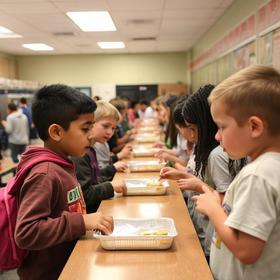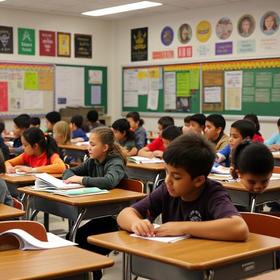North Dakota Vision Services/School for the Blind is a branch of the North Dakota government offering services to visually impaired residents of all ages in North Dakota. It is centered in Grand Forks, with regional offices in Bismarck, Fargo, Jamestown, and Minot.
Quick Facts (2025-26)
- Source: National Center for Education Statistics (NCES), ND Dept. of Education
School Overview
Grades Offered
n/a
Total Students (94-95)
3 students
Total Classroom Teachers (11-12)
12 teachers
Year Founded
1908
School Calendar
Last Day of School
Fri. May 29, 2026
School Rankings
Student-Teacher Ratio
n/a
11:1
American Indian
(94-95)n/a
8%
Asian
(94-95)n/a
1%
Hispanic
(94-95)n/a
1%
Black
(94-95)n/a
n/a
White
(94-95)100%
90%
Hawaiian
(94-95)n/a
n/a
Two or more races
(94-95)n/a
n/a
Eligible for Free Lunch (93-94)
30%
21%
School Statewide Testing
School District Name
Source: National Center for Education Statistics (NCES), ND Dept. of Education
Profile last updated: 02/09/2025
Frequently Asked Questions
How many students attend School For The Blind?
3 students attend School For The Blind.
What is the racial composition of the student body?
100% of School For The Blind students are White.
What school district is School For The Blind part of?
School For The Blind is part of North Dakota Vision Services/School For The Blind School District.
School Reviews
Review School For The Blind. Reviews should be a few sentences in length. Please include any comments on:
- Quality of academic programs, teachers, and facilities
- Availability of music, art, sports and other extracurricular activities
Recent Articles

How Public Schools Support Students on Free / Reduced-Lunch Programs
Explore how U.S. public schools support students eligible for free or reduced-price lunch through nutrition, academic, and wraparound services in 2025.

Hidden Costs of Public Schools: Fees, Supplies & Extras
Explore the hidden costs in public schools—fees, supplies, extracurriculars—and how parents can plan for them in 2025.

Public School Funding 2025: What Families Should Know
Essential insights on public school funding in 2025—how it works, what’s changing, and what families should know to stay ahead.









